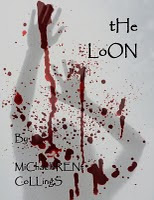Fear is like laughter in that both rely on a good setup, then providing the unexpected.
Both are also about delivery. Ever heard a good joke that was killed by someone who had no sense of timing or who let the setup go on far too long? Terror is the same way.
You as the writer must do two things in order to create terror in your reader:
(1) Create people you care about.
How many of you have gone to a "horror" movie that consisted of attractive people with no redeeming facets whom you were supposed to care about just because they were sexy/good-looking/unattainably attractive? And how many of you were actually scared during that horror movie (insert crickets chirping here).
This is because for horror (or suspense, or thrillers) to really work for as broad an audience as possible, you must care what is happening to the characters. Suspense, terror, horror, fear--they all rely on your reader investing enough in someone's survival or well-being to care when said survival or well-being is challenged. So, you have to either make your protagonists likable and/or sympathetic or create antagonists that are so interesting that they could be hunting cardboard and you would still be interested. Ideally, you will have both.
2) A guy walks into a bar... (Create a compelling setting.)
Your setting conveys a lot in terror. In all terror writing, the antagonists and protagonists do not exist in a vacuum. Your writing should a) create a concrete sense of where the action is happening, and b) use proper descriptives that back up the terror of the events unfold in those places. I'll elaborate:
a) Create a concrete sense of where the action is happening.
Terror is generally an internal reaction to an external stimulus. In order to create terror, you--the writer, must create an external reality that is terrible in itself. Why else do you think so many horror books happen in snowstorms? This is an externalization of the terrible acts that happen in the story. Each extra layer of information you can provide which supports or reflects the action will provide you with another layer of depth that your readers can grab onto subconsciously--in effect reinforcing the terror you are creating.
b) Use proper descriptives.
Every word conveys a different sense, a different tone, and you must always be careful to pick the kinds of words that will echo the tone that you are trying to create. Consider:
Lightning lit up the sky.
Lightning slashed across the night sky, leaving a scar of thunder in its wake.
Which one of these sentences seems like a better "scary" sentence to you? Any and all descriptors should be used to buoy and reinforce the feelings of horror you are trying to create.
I had a writing teacher who said he only had one rule: "Bore me and die." Nowhere is that more true than in writing terror. Be sure that your characters grab your readers from the beginning. Reinforce their fears with settings and scenes that mirror the main conflicts between protagonists and antagonists. And always remember that each word should be, for lack of a better word, terrifying.
*************************

Michaelbrent Collings is the author of numerous Amazon.com bestsellers and is most recently the author of the suspense thriller Rising Fears.
Amazon.com bestselling YA fantasy Billy: Messenger of Powers
The new suspense thriller Rising Fears

Thank you. Nice lesson (and I'll keep it in mind next time our writing group meets).
ReplyDelete